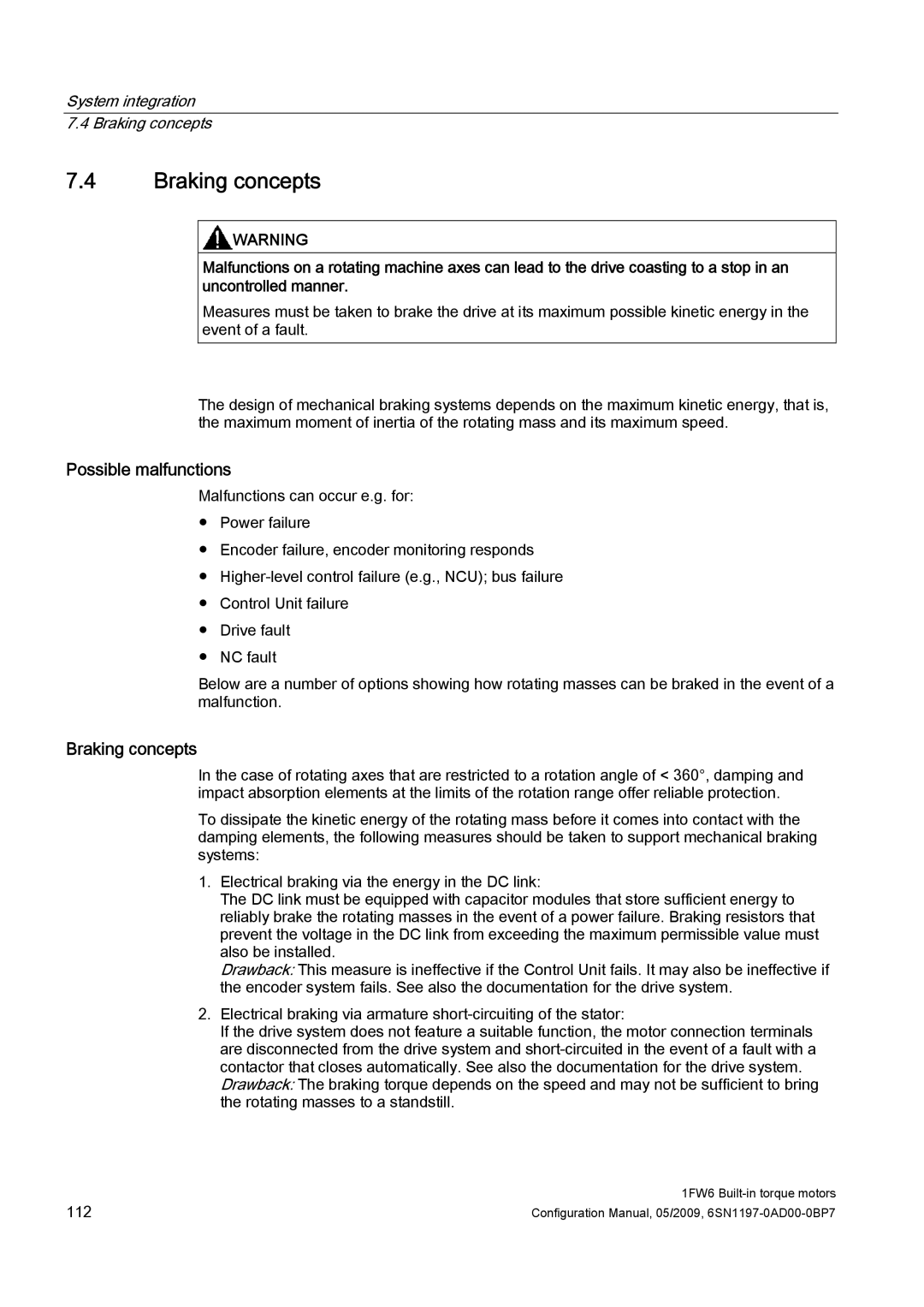
System integration 7.4 Braking concepts
7.4Braking concepts
![]() WARNING
WARNING
Malfunctions on a rotating machine axes can lead to the drive coasting to a stop in an uncontrolled manner.
Measures must be taken to brake the drive at its maximum possible kinetic energy in the event of a fault.
The design of mechanical braking systems depends on the maximum kinetic energy, that is, the maximum moment of inertia of the rotating mass and its maximum speed.
Possible malfunctions
Malfunctions can occur e.g. for:
●Power failure
●Encoder failure, encoder monitoring responds
●
●Control Unit failure
●Drive fault
●NC fault
Below are a number of options showing how rotating masses can be braked in the event of a malfunction.
Braking concepts
In the case of rotating axes that are restricted to a rotation angle of < 360°, damping and impact absorption elements at the limits of the rotation range offer reliable protection.
To dissipate the kinetic energy of the rotating mass before it comes into contact with the damping elements, the following measures should be taken to support mechanical braking systems:
1.Electrical braking via the energy in the DC link:
The DC link must be equipped with capacitor modules that store sufficient energy to reliably brake the rotating masses in the event of a power failure. Braking resistors that prevent the voltage in the DC link from exceeding the maximum permissible value must also be installed.
Drawback: This measure is ineffective if the Control Unit fails. It may also be ineffective if the encoder system fails. See also the documentation for the drive system.
2.Electrical braking via armature
If the drive system does not feature a suitable function, the motor connection terminals are disconnected from the drive system and
Drawback: The braking torque depends on the speed and may not be sufficient to bring the rotating masses to a standstill.
112 | 1FW6 |
Configuration Manual, 05/2009, |
